
Myofascial Release - The SCARY Truth
Myofascial Release – What is it?
Well, myofascial comes from the root word fascia and fascia is a strong connective tissue that runs continuously and web-like throughout the body. If you’ve skinned a chicken breast or trimmed meat you’ve encountered fascia, the whitish colored thin sheets of tissue between the skin and muscle of the meat. I know, I know, gross, right?
Well, fascia performs a number of functions, including enveloping and isolating the muscles of the body, providing structural support and protection. Fascia is a very important part of the body, and it has three layers, starting with the superficial fascia directly under the skin and ending with subserous fascia, deep inside the body. Since it is everywhere, you can’t touch the body without touching fascia. But due to injury, post surgical scarring, poor posture, trauma (like intense workouts) or repetitive movements, the fascia can create tight little knots.
Myofascial release is simply applying pressure to those tight little knots, which, by the way, can be extremely painful. Myofascial release actually is a safe and very effective technique that involves applying sustained pressure to those tight little knots.
Myofascial Release – The benefits?
Now we know what it is. But why would we do it, especially since it hurts! Well, through the use of that sustained pressure (even though it hurts!) the restricted areas of the fascia is released. The body is able to return to a more normal state of balance and alignment. This in turn removes the pressure off connective structures allowing for increased range of motion, function, and decreased pain and discomfort.
Wow, pretty impressive, huh? Myofascial release is very beneficial. But, not only is it beneficial, myofascial release is easy to do!
Myofascial Release – How to do it?

Get a Rumble Roller for Self-Myofascial Release!
Above we mentioned using a sustained pressure with the myofascial release technique. There is a reason why this pressure needs to be sustained. To quickly review, there are two basic neural receptors located in skeletal muscle tissue, muscle spindle and the golgi tendon organ. These two receptors work together so that we don’t overstretch and/or injure our muscles. But when we are applying the myofascial release techniques, rolling on that Rumble Roller, the pain activates the muscle spindles, causing increased tightness and pain. Not good! But, with a sustained pressure of 30-45 seconds with the Rumble Roller the golgi tendor organ will be stimulated relaxing the muscle! Hence, myofascial release. That is good!
Although the techniques are called exercises, focus on relaxing your muscles. Using a Rumble Roller is to be done very slowly and deliberately. This way you can find each of those little knots and SIT ON IT! Some exercises will be surprisingly painful the first time you try them, but that may simply be an indication that you have a lot to gain from that exercise. The surface of the RumbleRoller contains specially designed bumps that are firm, but flexible, much like the thumbs of a massage therapist. As you roll over the top of the RumbleRoller, the bumps continuously knead the contours of your body, gently stretching soft tissue (muscle and fascia) in multiple directions. Allow the Rumble Roller’s bumps to sink in deeply and gradually the muscle will begin to loosen and the pain will begin to dissipate. Focus on the exercises that provide you with the most relief and do them consistently. Within a few weeks, the quality of your muscle tissue will improve, and those same exercises will become much more enjoyable.
So, in review:
Get a Rumble Roller for Self-Myofascial Release!
Self-Myofascial Release
You have all the information you need to get going with self-myofascial release with a Rumble Roller! I promise that you’ll really start to enjoy this technique. I know I have! Here are some sample exercises that you should try. Remember, focus on the areas that need attention! Oh, and I almost forgot! What is the SCARY truth? The SCARY truth is that you NEED myofascial release AND that it is going to hurt! But it is worth the pain!
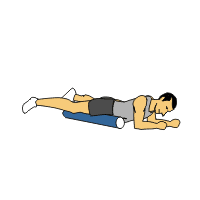 Adductor Self Myofascial Release |
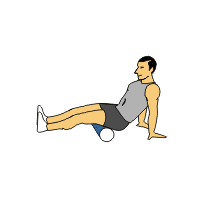 Hamstring Self Myofascial Release |
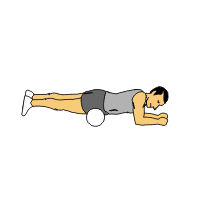 Quadriceps Slef Myofascial Release |
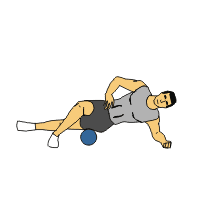 Iliotibial Band Self Myofascial Release |
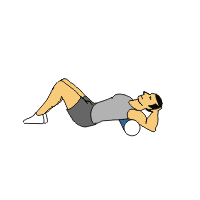 Upper Back Self Myofascial Release |
